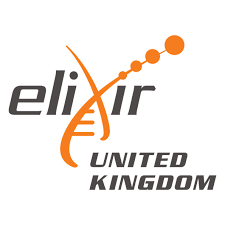GtoPdb is requesting financial support from commercial users. Please see our sustainability page for more information.
GPR75
Target id: 115
Nomenclature: GPR75
Family: Class A Orphans with emerging pharmacology
This receptor has a proposed ligand; see the Latest Pairings page for more information.
Contents:
- Gene and Protein Information
- Previous and Unofficial Names
- Database Links
- Natural/Endogenous Ligands
- Agonists
- Transduction Mechanisms
- Tissue Distribution
- Expression Datasets
- Clinically-Relevant Mutations and Pathophysiology
- Biologically Significant Variants
- General Comments
- References
- How to cite this page
Gene and Protein Information  |
||||||
| class A G protein-coupled receptor | ||||||
| Species | TM | AA | Chromosomal Location | Gene Symbol | Gene Name | Reference |
| Human | 7 | 540 | 2p16.2 | GPR75 | G protein-coupled receptor 75 | 6 |
| Mouse | 7 | 540 | 11 A4 | Gpr75 | G protein-coupled receptor 75 | |
| Rat | 7 | 540 | 14q22 | Gpr75 | G protein-coupled receptor 75 | |
Previous and Unofficial Names  |
| WI-31133 | WI31133 |
Database Links  |
|
| Specialist databases | |
| GPCRdb | gpr75_human (Hs), gpr75_mouse (Mm), d3z826_rat (Rn) |
| Other databases | |
| Alphafold | O95800 (Hs), Q6X632 (Mm), D3Z826 (Rn) |
| ChEMBL Target | CHEMBL4523861 (Hs) |
| Ensembl Gene | ENSG00000119737 (Hs), ENSMUSG00000043999 (Mm), ENSRNOG00000022176 (Rn) |
| Entrez Gene | 10936 (Hs), 237716 (Mm), 498434 (Rn) |
| Human Protein Atlas | ENSG00000119737 (Hs) |
| KEGG Gene | hsa:10936 (Hs), mmu:237716 (Mm), rno:498434 (Rn) |
| OMIM | 606704 (Hs) |
| Pharos | O95800 (Hs) |
| RefSeq Nucleotide | NM_006794 (Hs), NM_175490 (Mm), NM_001109096 (Rn) |
| RefSeq Protein | NP_006785 (Hs), NP_780699 (Mm), NP_001102566 (Rn) |
| UniProtKB | O95800 (Hs), Q6X632 (Mm), D3Z826 (Rn) |
| Wikipedia | GPR75 (Hs) |
Natural/Endogenous Ligands  |
| CCL5 {Sp: Human} |
| Comments: CCL5 was reported to be an agonist of GPR75 by Ignatov et al. [1] but the pairing could not be repeated in a recent β-arrestin assay [5]. |
Download all structure-activity data for this target as a CSV file 
| Agonists | |||||||||||||||||||||||||||||||||||||||||||||||||||
| Key to terms and symbols | Click column headers to sort | ||||||||||||||||||||||||||||||||||||||||||||||||||
|
|||||||||||||||||||||||||||||||||||||||||||||||||||
| Agonist Comments | |||||||||||||||||||||||||||||||||||||||||||||||||||
| Agonist data obtained from a luciferase reporter gene assay [1]. | |||||||||||||||||||||||||||||||||||||||||||||||||||
Primary Transduction Mechanisms 
|
|
| Transducer | Effector/Response |
| Gq/G11 family | Phospholipase C stimulation |
| Comments: CCL5 was reported to induce pertussis toxin-insensitive signalling, and dose dependent IP3 formation and Ca2+ mobilisation [1,3]. | |
| References: 1 | |
Tissue Distribution 
|
||||||||||
|
||||||||||
|
||||||||||
|
||||||||||
|
||||||||||
|
Expression Datasets  |
|
|
| Clinically-Relevant Mutations and Pathophysiology Comments |
| Six potential pathogenic variants have been identified to associate GPR75 with genetic predisposition to age-related macular degeneration [4]. |
Biologically Significant Variants 
|
||||||||||||||||||
|
||||||||||||||||||
|
||||||||||||||||||
|
||||||||||||||||||
|
| General Comments |
| CCL5 mediated pertussis toxin-insensitive signalling is neuroprotective, promoting survival of hippocampal cell lines following insult with amyloid-beta peptide, indicating a role for GPR75 in Alzheimer's disease [2]. |
References
1. Ignatov A, Robert J, Gregory-Evans C, Schaller HC. (2006) RANTES stimulates Ca2+ mobilization and inositol trisphosphate (IP3) formation in cells transfected with G protein-coupled receptor 75. Br J Pharmacol, 149 (5): 490-7. [PMID:17001303]
2. Pease JE. (2006) Tails of the unexpected - an atypical receptor for the chemokine RANTES/CCL5 expressed in brain. Br J Pharmacol, 149 (5): 460-2. [PMID:17001302]
3. Pease JE. (2011) Targeting chemokine receptors in allergic disease. Biochem J, 434 (1): 11-24. [PMID:21269275]
4. Sauer CG, White K, Stöhr H, Grimm T, Hutchinson A, Bernstein PS, Lewis RA, Simonelli F, Pauleikhoff D, Allikmets R, Weber BH. (2001) Evaluation of the G protein coupled receptor-75 (GPR75) in age related macular degeneration. Br J Ophthalmol, 85 (8): 969-75. [PMID:11466257]
5. Southern C, Cook JM, Neetoo-Isseljee Z, Taylor DL, Kettleborough CA, Merritt A, Bassoni DL, Raab WJ, Quinn E, Wehrman TS et al.. (2013) Screening β-Arrestin Recruitment for the Identification of Natural Ligands for Orphan G-Protein-Coupled Receptors. J Biomol Screen, 18 (5): 599-609. [PMID:23396314]
6. Tarttelin EE, Kirschner LS, Bellingham J, Baffi J, Taymans SE, Gregory-Evans K, Csaky K, Stratakis CA, Gregory-Evans CY. (1999) Cloning and characterization of a novel orphan G-protein-coupled receptor localized to human chromosome 2p16. Biochem Biophys Res Commun, 260 (1): 174-80. [PMID:10381362]










